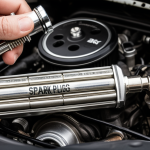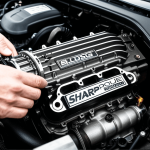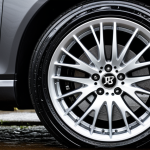Understanding the Heritage of Iconic British Car Interiors
British car interiors hold a rich place in classic British car history, showcasing a blend of craftsmanship and distinctive design that reflects the era’s automotive culture. The car interior heritage of models like the Jaguar E-Type, Triumph TR series, and classic Land Rovers is a source of pride for enthusiasts. These interiors often combine wood veneers, leather upholstery, and hand-crafted details that underline Britain’s legacy in automotive design.
The British car restoration culture values preserving these authentic details, recognizing that originality directly impacts a vehicle’s collector value. Restorers strive to retain or replicate factory specifications, from seat stitching patterns to dashboard layouts. This careful restoration not only honors history but also ensures that classics maintain their allure and market appeal.
Avez-vous vu cela : Unlocking Engine Power: The Ultimate Torque Testing Handbook for UK Vehicles
Collectors and restorers seek to highlight the intricate workmanship, understanding that every detail, no matter how small, contributes to the car’s historical significance. In this way, the classic British car history continues to be celebrated through meticulous interior restorations.
Understanding the Heritage of Iconic British Car Interiors
British car interiors hold a distinguished place in classic British car history. They exemplify craftsmanship, blending traditional aesthetics with practical design. Enthusiasts value these interiors not just for their function but for representing the evolution of British automotive style.
Avez-vous vu cela : The Ultimate Guide to Safely Installing Turbochargers in UK Cars: Expert Insights and Best Practices
Models like the Jaguar E-Type, MG MGB, and Triumph TR6 are celebrated icons. These vehicles are major cornerstones in British car restoration culture, cherished for their elegant leather seats, meticulously detailed dashboards, and distinct wood or metal trim. The interiors showcase a blend of luxury and sportiness emblematic of mid-20th-century British engineering.
Preserving originality in these interiors is crucial. In collector markets, maintaining authentic materials and layouts substantially impacts a vehicle’s value. Using period-appropriate fabrics, colors, and hardware exemplifies care and respect for the car interior heritage, resulting in restoration projects that resonate with historical accuracy and authenticity. This dedication often defines the difference between a desirable collector piece and a mere replica in the classic car community.
Essential Tools, Materials, and Workspace Preparation
Preparing for a successful British car interior restoration starts with having the right restoration tools and workspace. Precision tools such as upholstery needles, seam rippers, and hog ring pliers are essential for handling delicate materials. For fastening and trimming, specialized screwdrivers and trim removal tools ensure no damage to original fittings.
Using authentic British car interior materials like Connolly leather, walnut veneer, and natural fiber carpets is crucial. These materials maintain the integrity of the restoration while reflecting the original craftsmanship seen in classic British car history. Avoid synthetic substitutes, as they can undermine the car’s collector value and historical accuracy.
Setting up a dedicated restoration workspace promotes efficiency and safety. Workbenches with proper lighting, ventilation to manage adhesives and finishes, and organized storage for small parts prevent loss or contamination. Cleanliness is also vital; dust and dirt can damage fine leather and veneer during restoration. Investing time and effort into workspace preparation complements the technical skills required in the British car restoration culture, ensuring each project honours the car interior heritage it represents.
Essential Tools, Materials, and Workspace Preparation
Successful interior restoration starts with having the right restoration tools and authentic British car interior materials. Essential tools include precision screwdrivers, upholstery needles, fastening pliers, seam rippers, and heat guns. These tools allow careful handling of delicate components without damage.
Choosing materials is equally critical. Using leather, wood veneers, and chrome trimmings that match the original factory specifications ensures adherence to the car interior heritage. For example, selecting the correct type of aniline leather and period-specific fabric patterns preserves both look and feel, which restoration enthusiasts highly value.
Creating an effective, safe restoration workspace helps maintain quality and efficiency. A well-lit area with climate control prevents moisture damage and facilitates detailed work on seats, dashboards, and panels. Organizing tools and materials with easy access minimizes disruption during restoration.
Preparation also involves protecting surfaces to avoid accidental staining or marks. This combination of appropriate tools, careful material selection, and a properly arranged workspace embodies best practices within British car restoration culture and supports restoring interiors with historical accuracy.
Sourcing Authentic and High-Quality Replacement Parts
Securing original car parts sourcing is crucial in preserving the car interior heritage of classic British vehicles. Enthusiasts must look for genuine OEM British interior parts to maintain authenticity. Using original components ensures that restoration outcomes closely match the factory specifications, which is essential in the British car restoration culture.
One effective strategy is consulting reputable classic car suppliers who specialise in verified OEM parts. Evaluating these suppliers involves checking their reputation for quality, provenance documentation, and customer reviews. This diligence helps avoid low-quality reproductions that can diminish a car’s collector value.
Rare parts, especially for iconic models like the Jaguar E-Type or Triumph TR series, often require patience and targeted sourcing. Restoration experts frequently network within collector communities and attend specialist auctions to locate these hard-to-find components. By prioritising quality and authenticity in parts sourcing, restorers uphold the integrity of classic British car history and ensure their projects stand the test of time.
Sourcing Authentic and High-Quality Replacement Parts
Finding original car parts or faithful reproductions is vital in preserving car interior heritage and maintaining authenticity in restoration. Enthusiasts often prioritize OEM British interior parts, which guarantee factory specifications. Searching established classic car suppliers specialising in British marques helps ensure quality and provenance.
A reliable sourcing strategy involves verifying part numbers, cross-referencing original manuals, and inspecting supplier reputations. Many suppliers offer reproduction parts made with period-correct materials—these are acceptable when originals are unavailable. However, restorers should scrutinize material feel and finish to avoid synthetic substitutions that can diminish collector value.
Rare parts for iconic models, such as Jaguar E-Type seat frames or Land Rover dashboard bezels, may require extended searches through specialist dealers, auctions, or clubs dedicated to classic British car history. Building relationships within such communities often unlocks access to scarce components and insider knowledge.
In summary, thorough evaluation of parts authenticity combined with sourcing from reputable classic car suppliers plays a crucial role in upholding the integrity demanded by the British car restoration culture.
Tackling Common Challenges in British Car Interior Restoration
Restoring classic British car interiors often involves overcoming specific restoration challenges that arise from age and wear. One frequent issue is worn or cracked leather seats. Expert advice suggests carefully assessing the leather’s condition before attempting repairs; minor cracks can be treated with specialised leather conditioners, but severe damage typically requires professional reupholstering to maintain authenticity within the British car restoration culture.
Dashboards and gauges can also present problems such as fading, cracking, or malfunctioning instruments. Restoration experts recommend cautious disassembly and calibrated refurbishment, using OEM components where possible, to preserve the car interior heritage and ensure functionality.
Moisture and mildew are common in older interiors, especially in models prone to poor sealing. Effective management begins with thoroughly drying affected areas and treating surfaces with anti-mildew agents. Preventative measures like replacing worn weatherstripping during restoration help prolong interior life and protect collector value.
Addressing these British car interior problems with targeted solutions supports both authenticity and longevity, keeping the spirit of classic British car history alive in every restoration project.
Tackling Common Challenges in British Car Interior Restoration
Restoring British car interiors comes with distinct restoration challenges that require expert attention. Worn or damaged seats often show cracked leather or compressed padding. Addressing this means carefully removing upholstery to assess and replace foam, then stitching or re-covering with period-correct leather to preserve the car interior heritage.
Dashboards and gauges may suffer from faded dials or malfunctioning hardware. Repair involves cleaning, recalibrating instruments, and restoring or sourcing OEM British interior parts to maintain authenticity. Loose or broken trim panels need precise refitting or replication to avoid harming original materials.
Managing moisture and mildew is another critical issue. Older interiors are prone to moisture damage that degrades fibers and leather. Solutions include thoroughly drying affected areas, using mold inhibitors, and improving ventilation in the restoration workspace to prevent recurrence. These expert approaches safeguard the vehicle’s value within the British car restoration culture by ensuring interiors remain both authentic and functional.
Understanding the Heritage of Iconic British Car Interiors
Classic British car history is deeply intertwined with the car interior heritage that defines many iconic models. The interiors of vehicles such as the Jaguar E-Type, Triumph TR series, and MG MGB represent more than just functionality; they embody a tradition of craftsmanship that is central to British automotive culture. Restorers within the British car restoration culture prioritize preserving these authentic interiors, understanding that originality directly influences collector value.
Preserving factory-original materials like leather, wood veneer, and dashboard design reinforces the car’s historical significance. For example, maintaining the original seat stitching pattern or dashboard layout can substantially increase a classic car’s market appeal. Enthusiasts value these details as tangible links to the vehicle’s past and the broader narrative of British motoring history.
This dedication to authenticity showcases the unique qualities that define British car interiors. It also supports the pride and enthusiasm found throughout the classic British car restoration culture, ensuring these interiors remain a celebrated aspect of classic British car history.
Understanding the Heritage of Iconic British Car Interiors
Classic British car history is deeply entwined with the distinctive car interior heritage that defines British automotive culture. Interiors of iconic models like the Jaguar E-Type, Triumph TR series, and MG MGB reveal a fusion of craftsmanship and design that enthusiasts treasure. These interiors feature hand-finished leather seats, walnut veneers, and meticulously arranged controls, showcasing the artistry prevalent in their era.
The British car restoration culture places great emphasis on preserving originality. Maintaining factory specifications—such as authentic materials and layout—ensures the vehicle’s collector value remains high. Enthusiasts widely agree that restoring interiors with period-correct details sustains historical integrity and enhances desirability.
Originality also connects owners to the vehicles’ past, allowing them to experience the design intentions of British manufacturers. From the tactile feel of Connolly leather to the grain of polished wood veneers, every element reflects the rich tradition celebrated by restorers. Ultimately, the dedication to preserving the car interior heritage ensures classic British cars continue to hold esteem within the restoration community and beyond.
Understanding the Heritage of Iconic British Car Interiors
The classic British car history is inseparable from the distinctiveness of its car interior heritage. Interiors in famous models—such as the Jaguar E-Type, MG MGB, and Triumph TR series—exemplify the blend of craftsmanship and design unique to British motoring culture. These interiors showcase authentic materials like hand-finished wood veneers, fine leather upholstery, and period-specific hardware, all integral to the vehicle’s character and historical significance.
Why is preserving originality so crucial in the British car restoration culture? Maintaining factory specifications directly impacts a car’s collector value, as enthusiasts and collectors highly prize authenticity. Genuine interior components, original stitching patterns, and correct material choices preserve the vehicle’s provenance, setting apart expertly restored cars from mere replicas. This attention to detail reflects a deep respect for Britain’s automotive legacy and enhances the car’s market desirability.
Popular models hold a special place in restoration circles because their interiors represent more than aesthetics; they embody the evolution of British automotive style. Upholding this heritage supports the ongoing passion for classic cars within the British car restoration culture.








